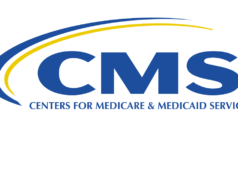 Revisions to current procedural terminology (CPT) codes in the USA for 2021 overhaul the evaluation and management section, reducing documentation requirements and introducing new rules determining the level of coding. These changes will affect interventional radiologists and radiation oncologists more than they will impact the day-to-day work of diagnostic radiologists, according to Erin Stephens, a senior client manager in education at Healthcare Administrative Partners.
Revisions to current procedural terminology (CPT) codes in the USA for 2021 overhaul the evaluation and management section, reducing documentation requirements and introducing new rules determining the level of coding. These changes will affect interventional radiologists and radiation oncologists more than they will impact the day-to-day work of diagnostic radiologists, according to Erin Stephens, a senior client manager in education at Healthcare Administrative Partners.
There are also several other non-evaluation and management code changes affecting interventional radiology for 2021.
Changes to the evaluation and management services section
Under the revised evaluation and management coding structure, physicians may elect to document a visit based either on time spent or on medical decision-making. Level 1 (99201) for new patients has been eliminated, leaving four levels of billing for new patients and five levels for established patients.
Until now, the level of coding has been determined by time spent face-to-face with the patient and by evaluating the three components of an exam:
- The patient’s history,
- The physical examination, and
- The level of medical decision-making
The new system that begins in 2021 will be based only on the following:
- The level of medical decision-making or
- The total time involved in the service of the patient, including non-face-to-face activities performed by the physician.
For an established patient, a level 1 visit (CPT 99211) might not require a physician to be involved. This could be a nurse visit or blood pressure check. There is minimal medical decision-making and no prescribed time element.
Medicare has approved a new code, G2212, to be used for encounters that exceed the maximum time for a level 5 (99205/99215) visit. Its description is “Prolonged office or other outpatient evaluation and management services (beyond the total time of the primary procedure which has been selected using total time), requiring total time with or without direct patient contact beyond the usual service, on the date of the primary service; each 15 minutes.” This mirrors the language of CPT code 99417 that might be approved by payers other than Medicare.
Other changes: Lung biopsy
The code 32405, “Biopsy, lung or mediastinum, percutaneous needle,” has been replaced by a new code 32408, “Core needle biopsy, lung or mediastinum, percutaneous, including imaging guidance, when performed.” Accordingly, imaging guidance may no longer be billed separately. When more than one core needle biopsy of the lung or mediastinum is performed on separate lesions during the same session on the same day, then 32408 is billed once for each additional lesion along with modifier -59.
Ventricular assist device (VAD) insertion
The coding of these procedures was revised to differentiate between left- and right-heart procedures, encompassing either initial placement or replacement of a percutaneous VAD.
Other changes: Endovascular venous arterialisation
Coding has been available for endovascular revascularisation (37228-37231 and 0505T), but not for arterialisation. A new code (0620T) has been created as follows:
“Endovascular venous arterialisation, tibial or peroneal vein, with transcatheter placement of intravascular stent graft(s) and closure by any method, including:
- Percutaneous or open vascular access,
- Ultrasound guidance for vascular access when performed,
- All catheterisation(s) and intraprocedural road-mapping and imaging guidance necessary to complete the intervention, and
- All associated radiological supervision and interpretation, when performed.”
Other changes: Ultrasound ablation of pulmonary arteries
A new code (0632T) has been created as follows:
“Percutaneous transcatheter ultrasound ablation of nerves innervating the pulmonary arteries, including:
- Right heart catheterisation
- Pulmonary artery angiography, and
- All imaging guidance.”












